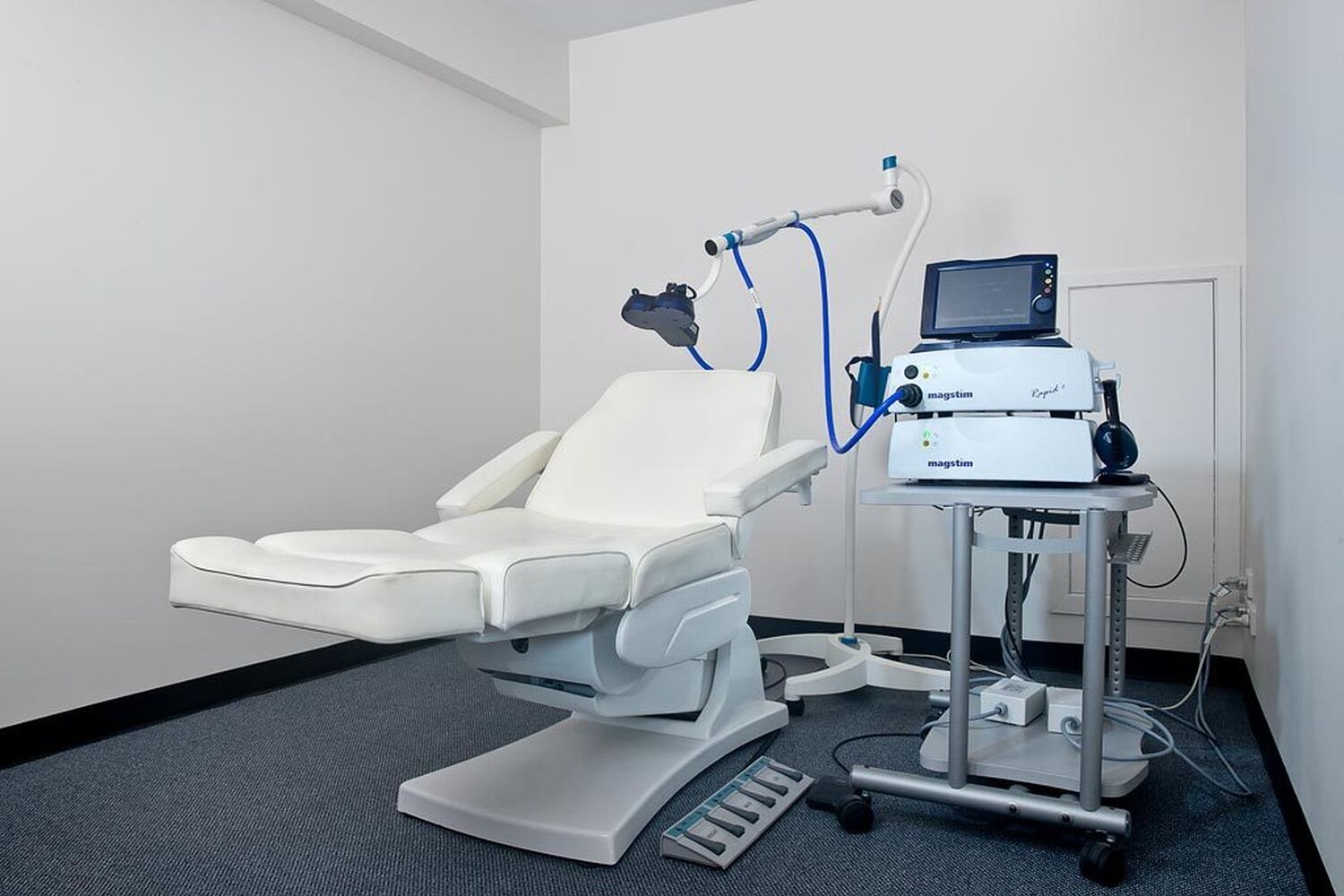Repetitive Transcranial Magnetic Stimulation (rTMS)
Repetitive Transcranial Magnetic Stimulation (rTMS) is a proven treatment for depression and possibly other psychiatric disorders. Studies have clearly shown that rTMS is an effective treatment for patients with depression.
What is rTMS?
Repetitive Transcranial Magnetic Stimulation (rTMS) is a non-invasive procedure that involves the focused application of magnetic energy to superficial regions of the brain, inducing small electrical currents. During an rTMS procedure, an electrical current passes through a small coil placed close to the scalp. This current induces a magnetic field. The magnetic field can pass into the brain without resistance. If the magnetic field is of sufficient strength, it will stimulate electrical activity in nerves below the coil, that is, in superficial regions of the brain.
rTMS in Depression
Studies have evaluated the role of rTMS in the treatment of depression since the mid-1990s. These studies have clearly shown that rTMS is more effective than a placebo type of stimulation, especially in patients who have not responded well to antidepressant medication treatment.
How is rTMS administered?
rTMS is administered as a course of 20 treatments which are generally administered on a daily basis. Sessions usually take between 20 and 45 minutes per day depending on the protocol being utilised. During an rTMS session a patient is awake, alert and aware of what is happening at all times and is seated in a comfortable chair. Before the treatment course begins, the treating Psychiatrist will undertake threshold testing to ensure that the correct prescription is tailored for the patient for the treatment sessions.
You may feel small twitches in the hand during this procedure. It is not painful. This procedure is done to establish how high the machine intensity needs to be sent to affect the brain in an individual patient.
During the treatment itself, a coil is usually placed on the scalp (held by hand or with a coil stand) near the front region of the brain. This may be on the left or right depending on how the treatment is being given. The coil is connected to a machine that generates the electrical current. You may feel a tapping sensation under the coil (this occurs due to a twitch produced in scalp muscles as the magnetic field crosses into the brain). The magnetic field can also stimulate small nerves around the head and face, producing a muscle twitch in the forehead, face or eye region.
Antidepressant medications may be prescribed, especially to try and prevent relapse after the treatment with rTMS finishes.
Treatment Program
The Central Coast Clinic has an accredited team of Clinicians who administer rTMS as part of an inpatient admission program. Average length of stay is 21 days. During this time, you will be enrolled in a depression specific psychoeducation program, designed specifically to provide the skills and strategies to support your recovery.

